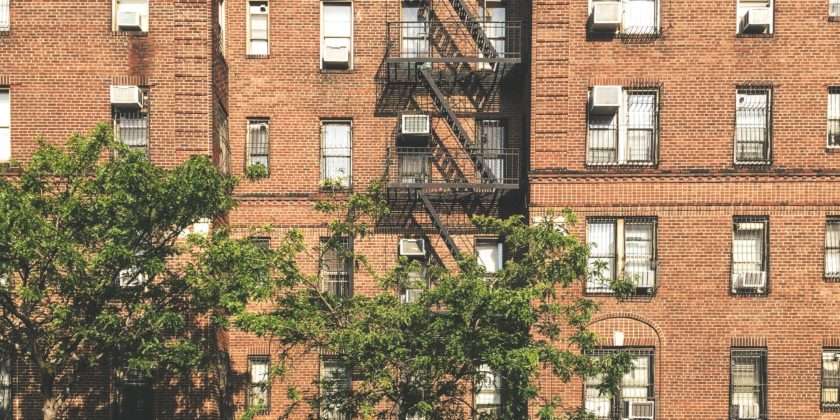The United States Treasury Department has a program that could be of benefit to many Americans. This program should be of particular interest to Black Americans since much less than half (42%) of Black families own their homes, compared to almost three-quarters (73%) of White families1. This post ”Rental Help- 3 Ways to Eligibility.” seeks to provide current and relevant information from a trusted source during the COVID-19 pandemic. Here are the details.
KEEPING FAMILIES IN THEIR HOMES2
The Emergency Rental Assistance program makes available $25 billion to assist households that are unable to pay rent and utilities due to the COVID-19 pandemic. The funds are provided directly to States, U.S. Territories, local governments, and Indian tribes. Grantees use the funds to provide assistance to eligible households through existing or newly created rental assistance programs.
INFORMATION FOR GOVERNMENTS
Emergency Rental Assistance payments will be made directly to States (including the District of Columbia), U.S. Territories (Puerto Rico, the United States Virgin Islands, Guam, the Commonwealth of the Northern Mariana Islands, and American Samoa), local governments with more than 200,000 residents, the Department of Hawaiian Home Lands, and Indian tribes (defined to include Alaska Native corporations) or the tribally designated housing entity of an Indian tribe, as applicable (collectively the “eligible grantees”).1 Details on the data and methodology used to determine allocations for states, local governments and territories may be accessed below. Details on the data and methodology and payments for tribal communities also may be accessed below.
A list of eligible local governments, which includes a county, municipality, town, township, village, parish, borough, or other units of general government below the State level with a population that exceeds 200,000, may be accessed below.
Eligible grantees must provide payment information and sign the acceptance of award terms form accessible below. The award terms are available for review and may be accessed below. Prospective grantees should review in full the statutory provisions which may be accessed below, for complete participation requirements.
Completed payment information and a signed acceptance of award terms form generally must be submitted not later than 11:59 p.m. EDT on January 12, 2021, to ensure payments areNot less than 90 percent of awarded funds must be used for direct financial assistance, including rent, rental arrears, utilities, and home energy costs, utilities and home energy costs arrears, and other expenses related to housing. The remaining funds are available for housing stability services, including case management and other services intended to keep households stably housed, and administrative costs. Funds generally expire on December 31, 2021. Frequently asked questions (FAQ) regarding the operation of the ERA program may be accessed below. For ease of reference, the assistance listing number (CDFA number) assigned to the ERA program is 21.023. made within the 30-day period specified by the statute.2 Eligible grantees that do not provide complete information by 11:59 p.m. EDT on January 12, 2021, may not receive an Emergency Rental Assistance payment. To the extent any tribes or tribally-designated housing entities do not elect to participate in the program by providing the required payment materials, Treasury is required to reallocate those funds to those tribes that have elected to participate in the program.

PROGRAM INFORMATION
Eligibility
An “eligible household” is defined as a renter household in which at least one or more individuals meets the following criteria:
- Qualifies for unemployment or has experienced a reduction in household income, incurred significant costs, or experienced a financial hardship due to COVID-19;
- Demonstrates a risk of experiencing homelessness or housing instability; and
- Has a household income at or below 80 percent of the area median.
Rental assistance provided to an eligible household should not be duplicative of any other federally funded rental assistance provided to such a household.
Eligible households that include an individual who has been unemployed for the 90 days prior to application for assistance and households with income at or below 50 percent of the area median are to be prioritized for assistance.
Household income is determined as either the household’s total income for the calendar year 2020 or the household’s monthly income at the time of application. For household incomes determined using the latter method, income eligibility must be redetermined every 3 months.
Available Assistance
Eligible households may receive up to 12 months of assistance, plus an additional 3 months if the grantee determines the extra months are needed to ensure housing stability and grantee funds are available. The payment of existing housing-related arrears that could result in the eviction of an eligible household is prioritized. Assistance must be provided to reduce an eligible household’s rental arrears before the household may receive assistance for future rent payments. Once a household’s rental arrears are reduced, grantees may only commit to providing future assistance for up to three months at a time. Households may reapply for additional assistance at the end of the three-month period if needed and the overall time limit for assistance is not exceeded.
Application Process
An application for rental assistance may be submitted by either an eligible household or by a landlord on behalf of that eligible household. Households and landlords must apply through programs established by grantees. In general, funds will be paid directly to landlords and utility service providers. If a landlord does not wish to participate, funds may be paid directly to the eligible household. Treasury cannot process applications from households and landlords. Please review the list of eligible grantees below and contact your state, local, or Tribal grant recipient for information on how to apply.
TRANSPARENCY
The Department of the Treasury will issue public reports quarterly on the use of funds. The Treasury Office of Inspector General will conduct oversight of the program and may recoup funds from any government that fails to comply with the restrictions on the use of funds.
On February 22, 2021, Treasury revised its FAQs for Emergency Rental Assistance. Treasury continues to work with stakeholders to provide additional guidance and technical assistance, which will be forthcoming.
- Data and Methodology for State, Local Government, and Territory Allocations
- Listing of eligible units of local government

- Grantee award terms
- Statutory provisions
- FAQ regarding the Emergency Rental Assistance Program (published 2/22/2021)
- Data and Methodology for Tribal Communities
- Payments to Tribal Communities
- Deadline for Indian Tribes and TDHES
- Payments to States and Eligible Units of Local Government
- More specifically, the statute includes Indian tribes, including Alaska Native corporations, that were eligible for a grant under Title I of the Native American Housing Assistance and Self-Determination Act of 1996 (NAHASDA) (25 U.S.C. 4111 et seq.) for the fiscal year 2020.
- Indian tribes that opted out of receiving a grant allocation under the Native American Housing Block Grants program formula in the fiscal year 2020 must submit completed payment materials not later than 11:59 p.m. EDT on January 26, 2021.
Despite significant economic progress over the past decades, Black Americans experience far worse economic conditions than Whites or the population as a whole. Since Black Americans are over twice as likely to live in poverty as White Americans, we need any assistance available.
Jay Harold hopes you enjoyed this post, “Rental Help- 3 Ways to Eligibility.” Please share it and read more about Jay Harold here. Please take this advice from Muhammad Ali and give it back to others. “Service to others is the rent you pay for your room here on earth.”




